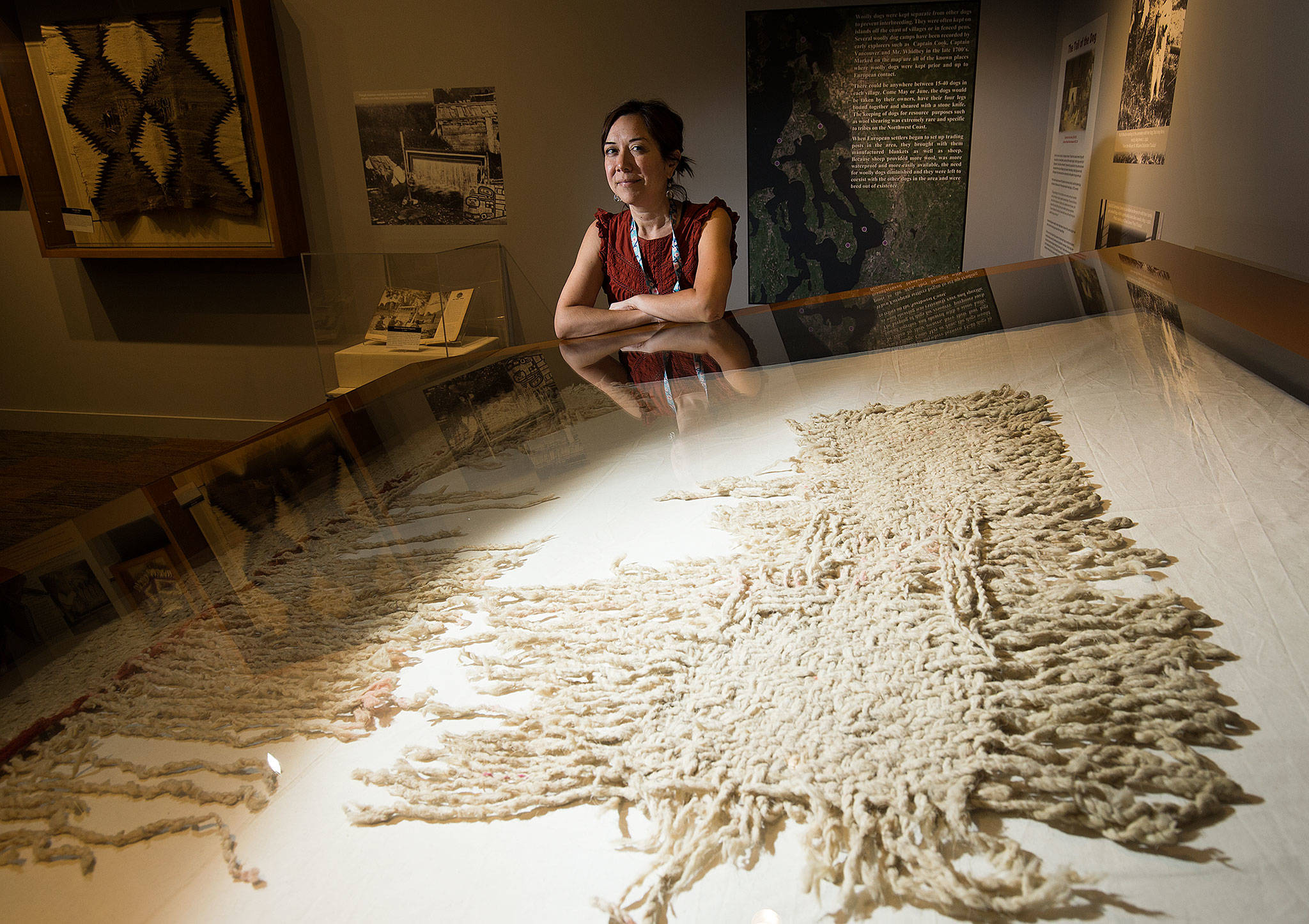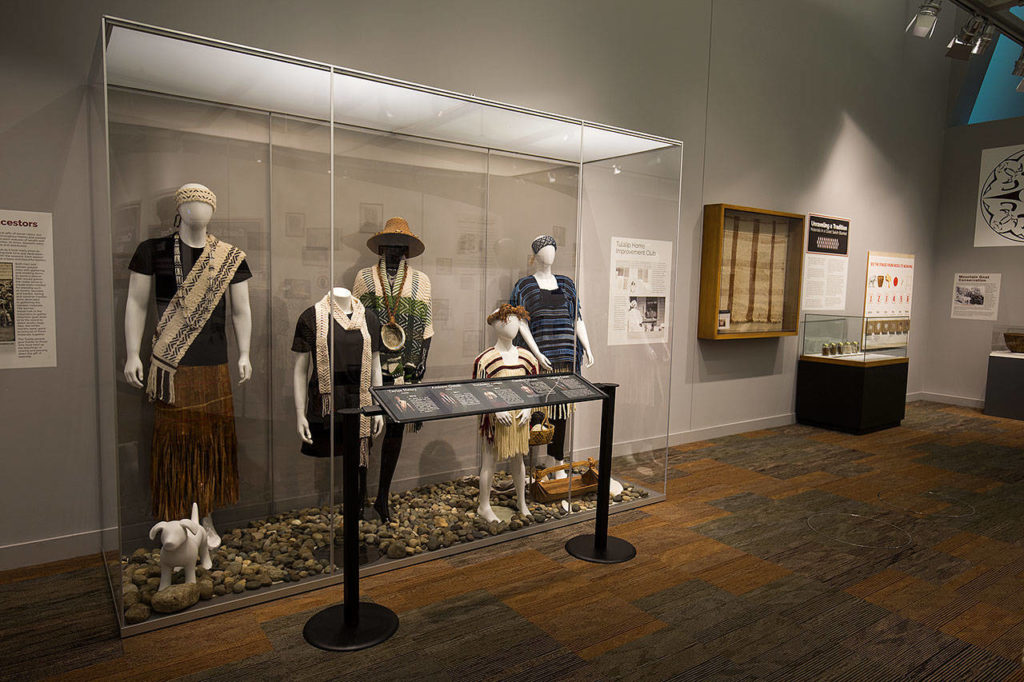TULALIP — It began with an idea from a museum staff member: Create an exhibit of the tradition of wool weaving in Coast Salish culture.
Even the two curators who would put together the Hibulb Cultural Center show, Tessa Campbell and Emilie Smith, said they knew little about the tradition and its history when they began.
It would take them more than a year of work, traveling more than 1,000 miles, with more than a few riddles — and surprises — along the way.
“It’s like a puzzle; the pieces come together,” Campbell said.
One of the challenges was unlocking the mystery of the woolly dog, an animal now extinct. The dog, shown in a few historic photos, does indeed live up to its name.
It was a dog that resembled a Pomeranian and was fed a very strict diet entirely of seafood and sheared once a year, Campbell said.
The dog’s hair, or “wool,” was the fiber woven to make blankets.
Among the questions the two curators faced was whether a blanket estimated to have been created from 1820 to 1850, donated by Tulalip tribal member Wayne W. Williams, contained woolly dog fibers.
“When it came time to develop the exhibit, that’s when we decided to have the blanket tested,” Campbell said.
The blanket was in fragile condition. In 2018, Smith and Campbell contacted the University of Victoria, asking for a lab analysis, which included the use of an electron microscope.
For three months, the two exhibit curators anxiously kept checking their email and voice messages, waiting for the results.
Campbell said there were moments when even she questioned what Williams had told her, that the blanket contained the fibers of the extinct dog breed. But at others she simply remembered “it’s what Wayne said.”
Finally, the answer came: The blanket was indeed rare, woven from woolly dog hair, mountain goat wool, hand-spun cotton and other natural materials.
As such, it is a direct physical link to the tribes’ cultural past.
“We were just ecstatic,” Campbell said.
“What makes this blanket so precious and rare to the Tulalip people is it is made of woolly dog hair, which is a breed that went extinct in the late 1800s.”
It is a highly prized gift of weaving, Campbell said.
The blanket would become the centerpiece of the exhibit. But other work still remained.
The Smithsonian National Museum of Natural History provided a photo of a woolly dog pelt in its collection.
They traveled to Vancouver, B.C., Bellingham, the University of Washington Archives and the National Archives at Sand Point in Seattle to gather information and photographs for the exhibit.
“It was like a big mystery to solve,” Campbell said. “We were going to all these institutions to gather bits and pieces of information.”
They also gathered some of the raw materials used in the blankets, including fireweed and nettle from behind the museum, duck down gathered at Twin Lakes in Marysville, and mountain goat hair from Northwest Trek Wildlife Park in Eatonville.
The exhibit includes four shadow boxes, about 20 displays of historic materials and photographs, an interactive display and loom replicas where visitors can try their skills at weaving. The exhibit can be seen through January.
Coast Salish weaving has existed for centuries. The first pieces of a loom in the area has been carbon dated as 5,000 years old and a loom piece found along the Skagit River more than 1,000 years old, Smith said.
Weaving is a tradition that is very important to the Coast Salish people socially and spiritually — a tradition that was lost, and then revitalized in the early 2000s, Campbell said.
“What’s so important,” she said, “is it demonstrates the resiliency of the Tulalip people.”
Sharon Salyer: 425-339-3486 or salyer@heraldnet.com.
If you go
“Interwoven History: Coast Salish Wool” is on display at the Tulalip Tribes Hibulb Cultural Center & Natural History Preserve, 6410 23rd Ave. NE, Tulalip. Museum hours are 10 a.m. to 5 p.m. Tuesday through Friday, and noon to 5 p.m. Saturday and Sunday. It is closed on Mondays.
Admission is $10 for those 18 to 49, $7 for those 50 and older, $6 for students 6 to 17 years old and free for children 5 and younger. Tickets for a family with two adults and up to four children are $25.
On the first Thursday of every month, admission is free and hours are extended to 10 a.m. to 8 p.m.
Call 360-716-2600 or go to www.hibulbculturalcenter.org for more information.
Talk to us
> Give us your news tips.
> Send us a letter to the editor.
> More Herald contact information.


























